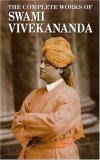More on this book
Community
Kindle Notes & Highlights
am passing through a street, and a man comes and takes away my watch. That is my own experience. I see it myself, and it immediately throws my Chitta into a wave, taking the form of anger. Allow not that to come. If you cannot prevent that, you are nothing; if you can, you have Vairâgya. Again, the experience of the worldly-minded teaches us that sense-enjoyments are the highest ideal. These are tremendous temptations. To deny them, and not allow the mind to come to a wave form with regard to them, is renunciation; to control the twofold motive powers arising from my own experience and from
...more
There are two sorts of objects for meditation in the twenty-five categories of the Sankhyas, (1) the twenty-four insentient categories of Nature, and (2) the one sentient Purusha. This part of Yoga is based entirely on Sankhya philosophy, about which I have already told you. As you will remember, egoism and will and mind have a common basis, the Chitta or the mind-stuff, out of which they are all manufactured. The mind-stuff takes in the forces of nature, and projects them as thought. There must be something, again, where both force and matter are one. This is called Avyakta, the unmanifested
...more
What is the result of constant practice of this higher concentration? All old tendencies of restlessness and dullness will be destroyed, as well as the tendencies of goodness too. The case is similar to that of the chemicals used to take the dirt and alloy off gold. When the ore is smelted down, the dross is burnt along with the chemicals. So this constant controlling power will stop the previous bad tendencies, and eventually, the good ones also. Those good and evil tendencies will suppress each other, leaving alone the Soul, in its own splendour untrammelled by either good or bad, the
...more
God is the Teacher of all teachers, because these teachers, however great they may have been — gods or angels — were all bound and limited by time, while God is not.
By the abovementioned process of breathing we can control all the various motions in the body, and the various nerve currents that are running through the body. First we begin to recognise them, and then we slowly get control over them.
we find that the part of religion which deals with the world-side of nature is so widely accepted, while the other part, the philosophy, or the psychology, which clears with the inner nature of man, is so frequently neglected.
that is why you find in the practice of Yoga ordinary people are at first turned out of their grooves.
When this meditation has been practiced for a long time, memory, the receptacle of all impressions, becomes purified, and we are able clearly to distinguish them from one another. This is called Nirvitarka, concentration without question.
the scriptures cannot take us to realisation. We can read all the Vedas, and yet will not realise anything, but when we practise their teachings, then we attain to that state which realises what the scriptures say, which penetrates where neither reason nor perception nor inference can go, and where the testimony of others cannot avail.
Realisation is real religion, all the rest is only preparation — hearing lectures, or reading books, or reasoning is merely preparing the ground; it is not religion. Intellectual assent and intellectual dissent are not religion. The central idea of the Yogis is that just as we come in direct contact with objects of the senses, so religion even can be directly perceived in a far more intense sense. The truths of religion, as God and Soul, cannot be perceived by the external senses. I cannot


